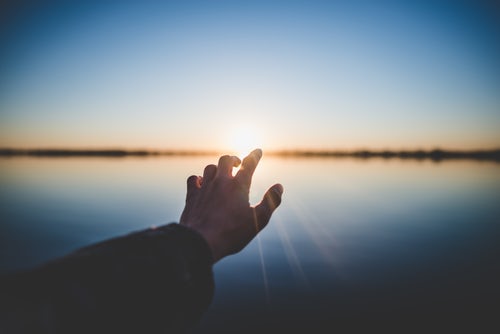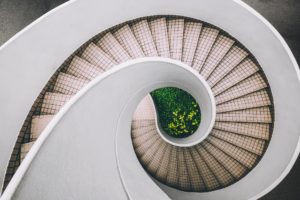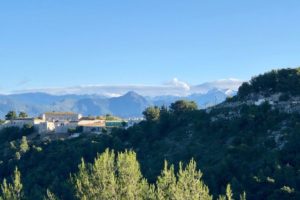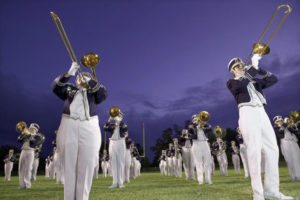We are striving to forge our union with purpose.
To compose a country committed to all cultures, colors, characters and conditions of man.
And so we lift our gaze, not to what stands between us, but what stands before us.
~Excerpt from “The Hill We Climb” by Amanda Gorman
We all felt it. The power of the poem. The visual impact of red headband, yellow coat, updo with gold mini-cuffs. The hypnotic meter and rhyme delivered with authority and precision. The floating choreographed hand gestures. The powerful word images demanding our attention, our participation.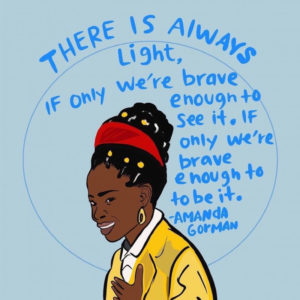
We were handed a gift on Inauguration Day. A forever answer to the question, “Why the arts?” How will we in the arts education field live up to its promise? How will we stretch toward possibility?
Arts Education and Poetry
Amanda Gorman was named the first national youth poet laureate in 2017, at age 19, at an event culminating years of work by arts organizations across the country. The National Youth Poet Laureate Program works with literary arts organizations across the country to identify and celebrate exceptional young poets who use their voice to inspire change. It is the brainchild of Urban Word in New York City. Gorman credits WriteGirl, a Los Angeles-based nonprofit, for giving her a running start. (WriteGirl has received a flood of donations since the inauguration.)
In K-12 public education, the literary arts, including creative writing and poetry, have long been primarily the domain of English Language Arts (ELA) classes. The learning standards for poetry live within the ELA curriculum. So, while poetry is certainly an art, it is not commonly included among arts education disciplines (dance, music, theatre, visual arts, media arts). Fortunately, the National Endowment for the Arts and many state and local arts councils do include the literary arts in their granting portfolios.
Inspiration at Home
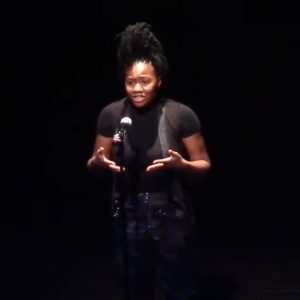
2021 Nashville Youth Poet Laureate Marie Shields
Small nonprofits focused on creative youth development can be found in most communities across the country. In my hometown of Nashville, there are dozens of arts and culture organizations funded by Metro Arts Nashville and the Tennessee Arts Commission that directly serve young people.
One such organization is Southern Word. Founded in 2008, Nashville-based Southern Word was developed by educators, youth development professionals, writers and poets from the ground up. It has grown to be a national, nonprofit leader in the spoken word education field, serving more than 6,800 youth, 43 schools, and 8 Tennessee counties. Like WriteGirl in Los Angeles, the organization’s total budget is less than $600,000, with a mix of revenue from grants, sponsorships, donations and earned income. Almost 60% of the budget is spent on poet mentors. As with most small nonprofits, its impact far exceeds the dollars raised and spent. And it is providing far more to students than the mechanics of poetry. Programs like Southern Word are driving literacy in important ways. They “equip youth with the tools to transition from passive consumers into active thinkers, creators, and projectors of their own positive identity.”
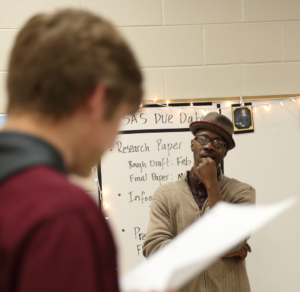
Southern Word mentor Shawn Whitsell leads a writer residency in Metro Nashville Public Schools
Southern Word programs reaches students primarily through school-based residencies, with additional outreach through community workshops and community performances. All programs are free to participants, excepting a nominal fee for performances. And because this is Nashville, Southern Word extends programming to include music production and writing in all genres. What is songwriting after all, but poetry set to music (or beats)?
Southern Word and the National Youth Poet Laureate program are rooted deeply in the desire to give voice to America’s often marginalized youth. Southern Word introduced the Youth Poet Laureate program to Nashville in 2015, in partnership with of the Nashville Public Library and Foundation, Metro Arts, and the Mayor’s Office. Since then, a Nashville poet has been named National Youth Poet Laureate finalist four times.
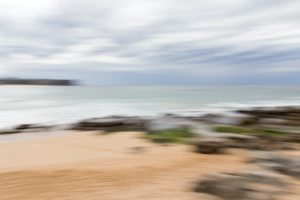
Blur the Lines
Creative youth education stands at the intersection of K-12 arts education and broader youth development programs. The lines are blurring between formal in-school arts instruction and out of school or after school classes, workshops or pre-professional programs, which is a good thing. If we are to see the whole child, we must be hyper-focused on young people themselves and blur the artificial barriers that separate artistic disciplines and in school from nonprofit partners. Creative education does not stop when the bell rings.
Keep in mind that effective programs take a lot of work. Benjamin Smith, Executive Director/CEO of Southern Word, states, “Implementation of spoken word education programs needs to be intentional. They require significant volunteerism, dedication, cultural competency, programmatic understanding, and organizational infrastructure to make them effective.”
Embrace the All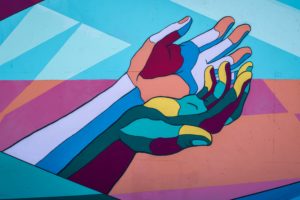
Amanda Gorman’s story is not only about individual exceptionalism. While we celebrate Gorman’s accomplishments and success, we know that hundreds and thousands of Amandas live among us, looking to tell their story, find their voice, better understand their world in order to cope with pain, poverty and injustice. Smith says, “At Southern Word, some of our most powerful and formative interactions are with students and youth who most people will never hear from but who need poetry as a resource to survive and persist in the world that they have been dealt.”
If you are so moved, here are some places to start blurring the lines and embracing the creative potential for all young people:
- Find a local creative youth development organization and get involved as a volunteer or donor. Check out your local and state arts councils for a list of grantees.
- If you are an arts teacher/administrator, reach out to your colleagues in English Language Arts and English Language Learner departments and look for ways to collaborate.
- Ask funders to help in blurring the lines between separate granting categories for the arts, education, and creative youth development.
Check out these national organizations:
- Creative Youth Development National Partnership works with national partners to advance creative youth development through visibility, funding, and field building. Look for an active network near you.
- Creative Generation works to inspire, amplify and connect the work of young creatives through research, professional learning, and leadership development.
- Check out the National Guild for Community Arts Education, Young Audiences: Arts for Learning and Save the Music Foundation.
Seize the day. Seize this moment of inspiration and hopefulness. Stretch for the possibilities.
Student is not a container you have to fill, but a torch you have to light up.
~Albert Einstein

